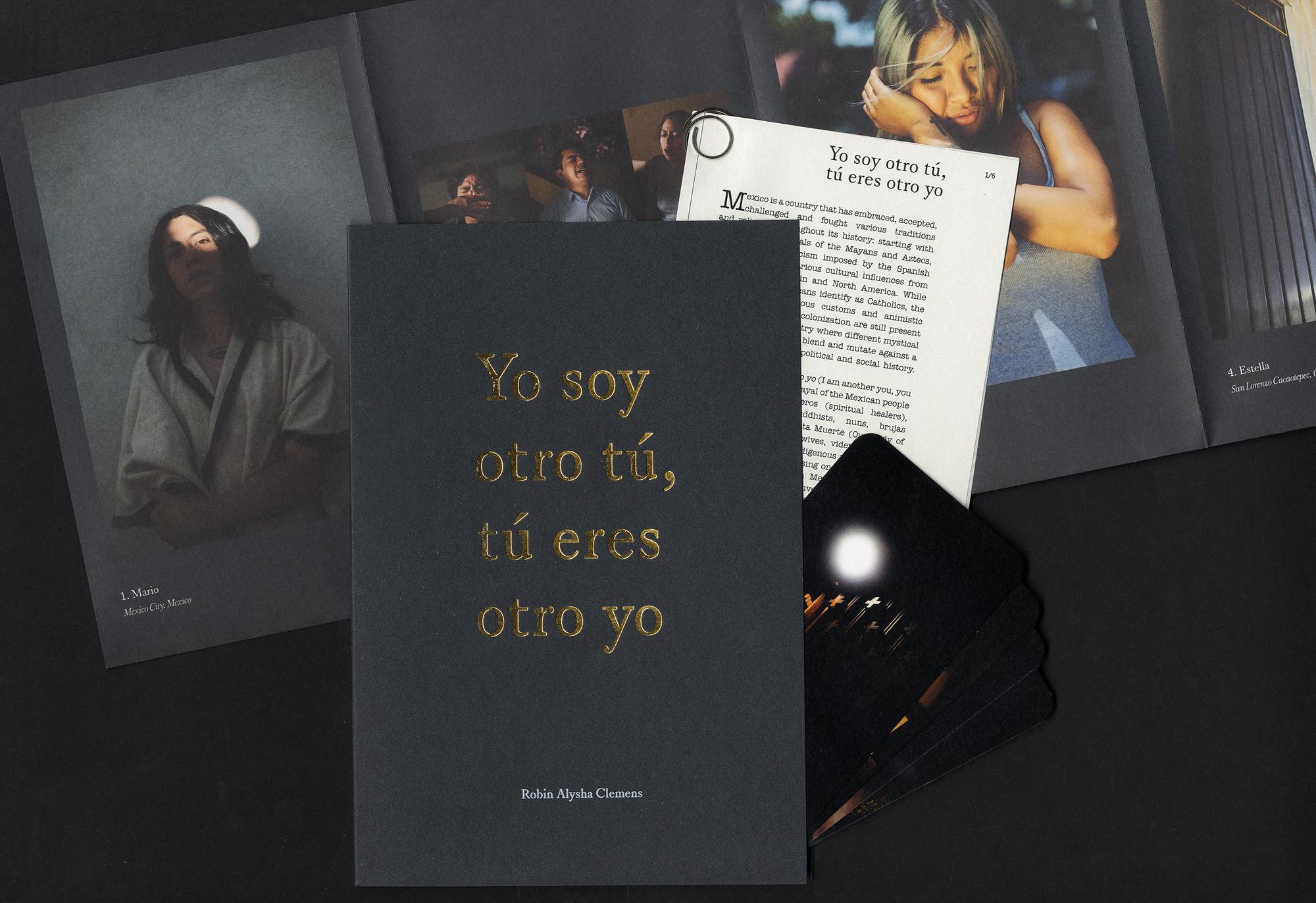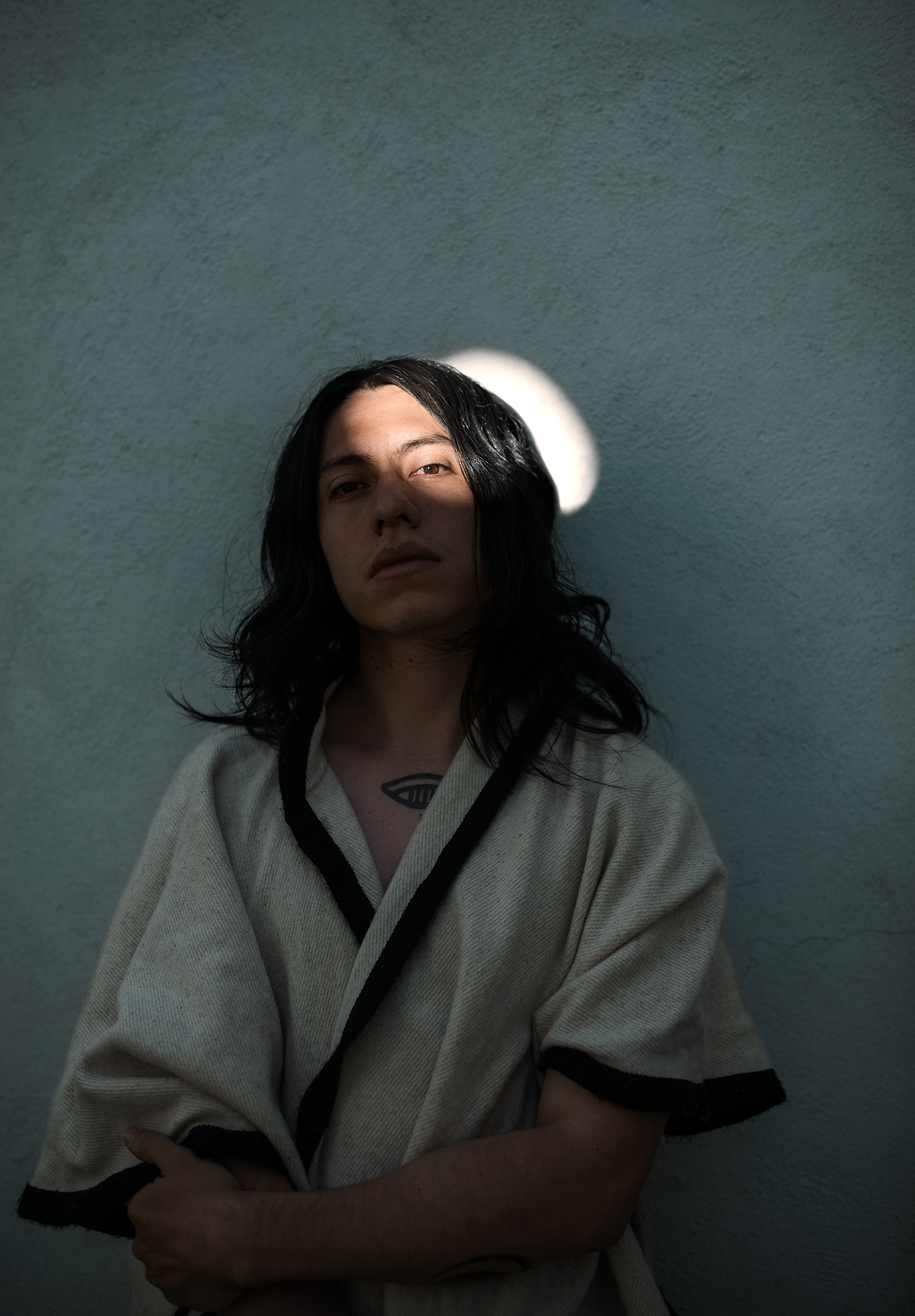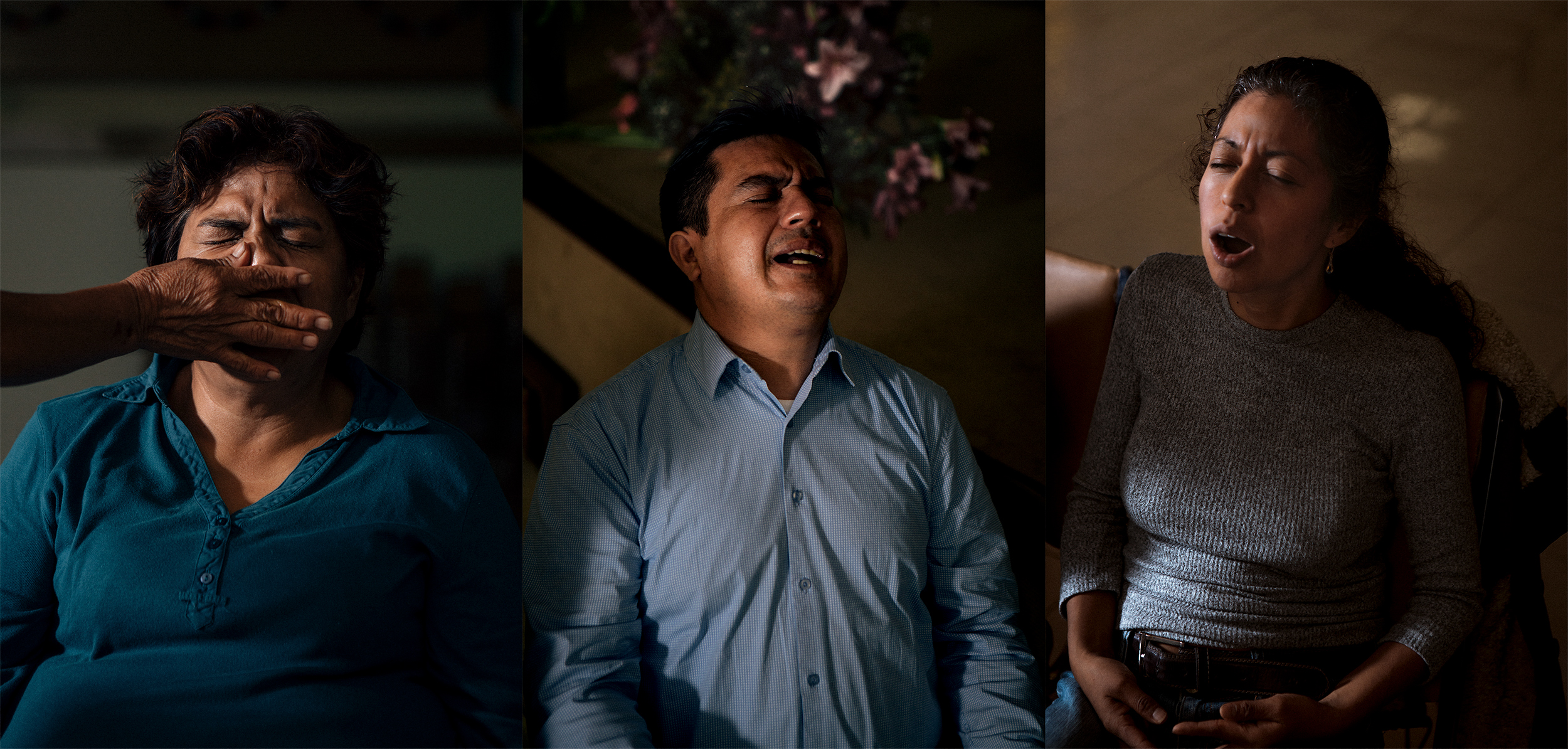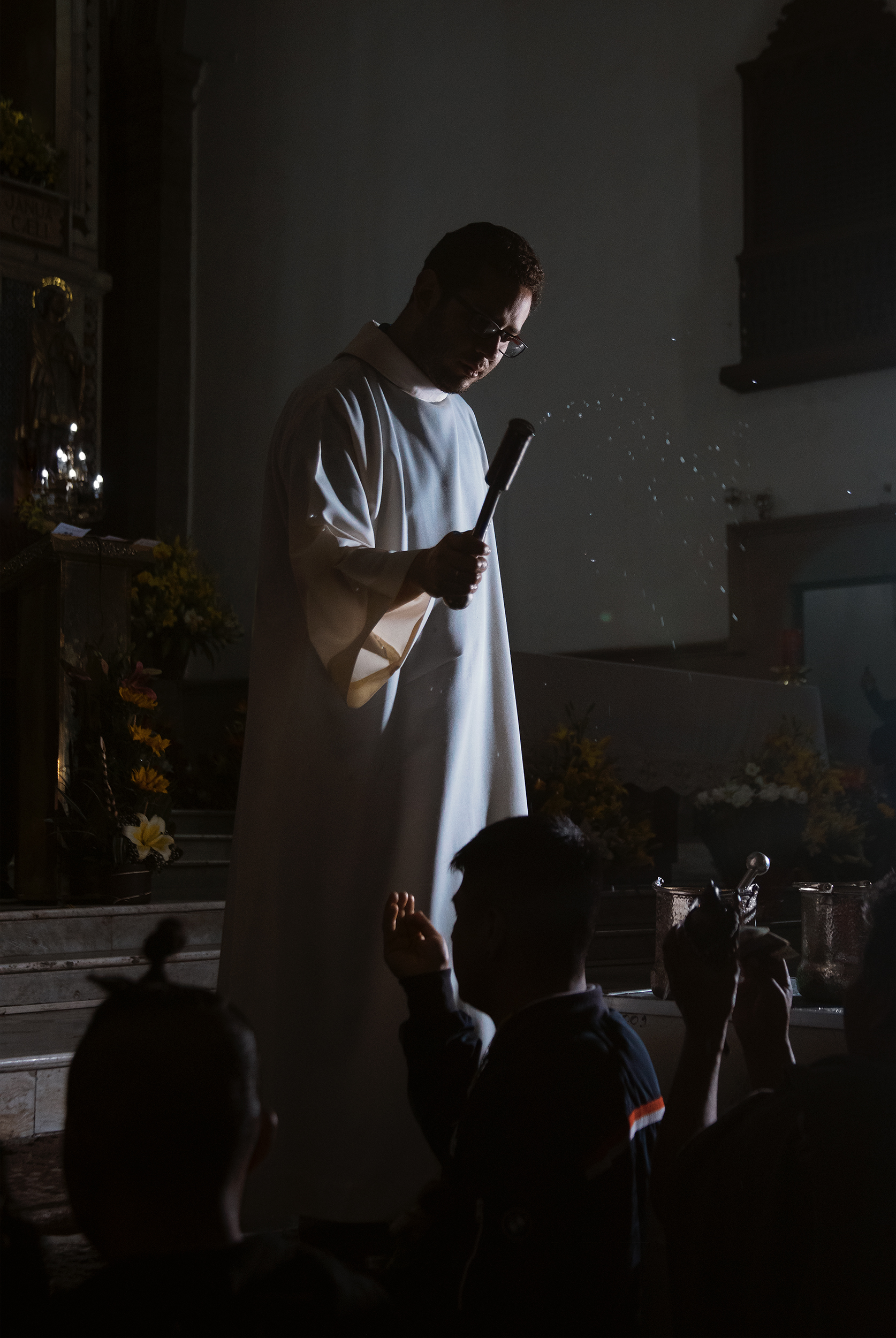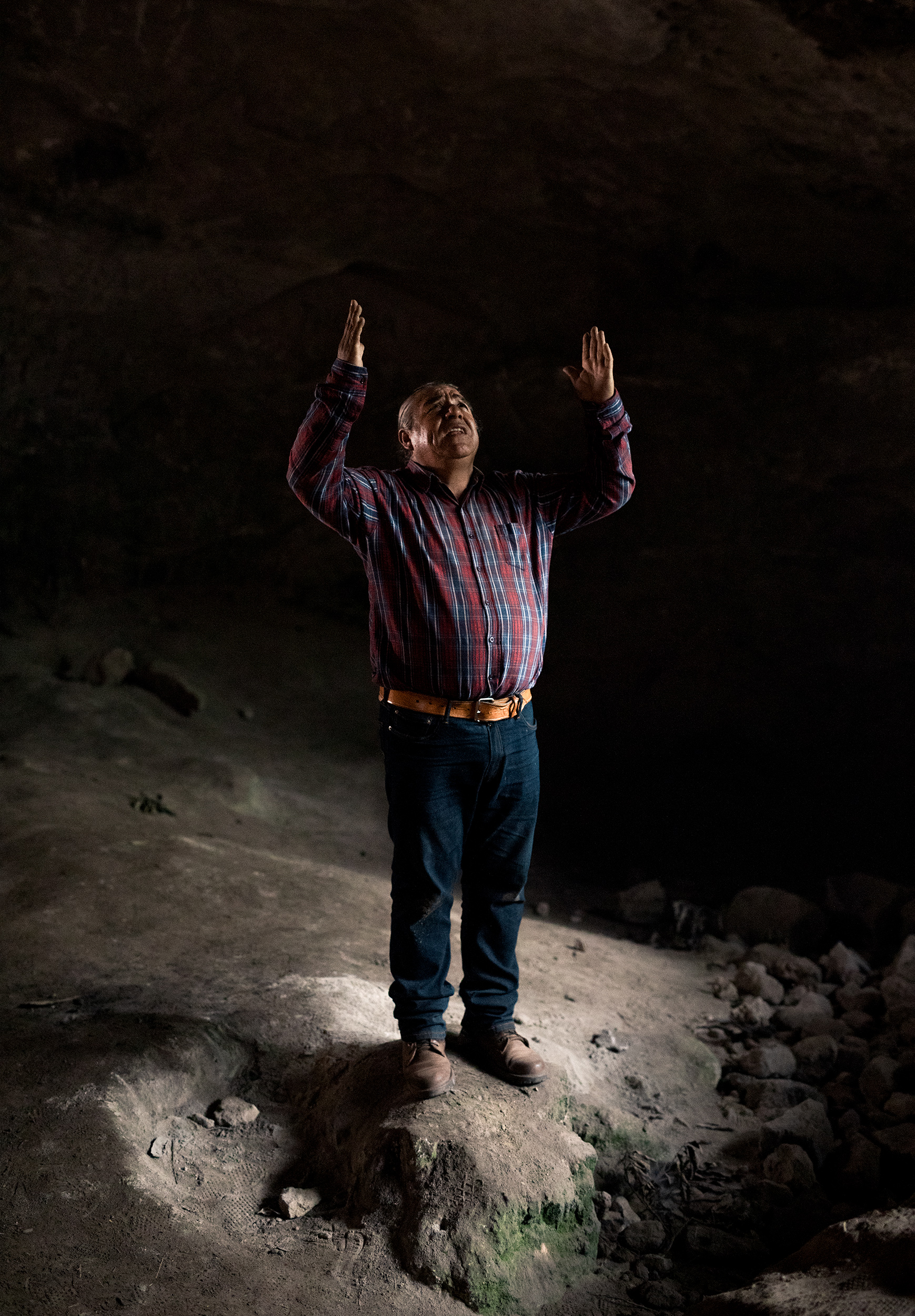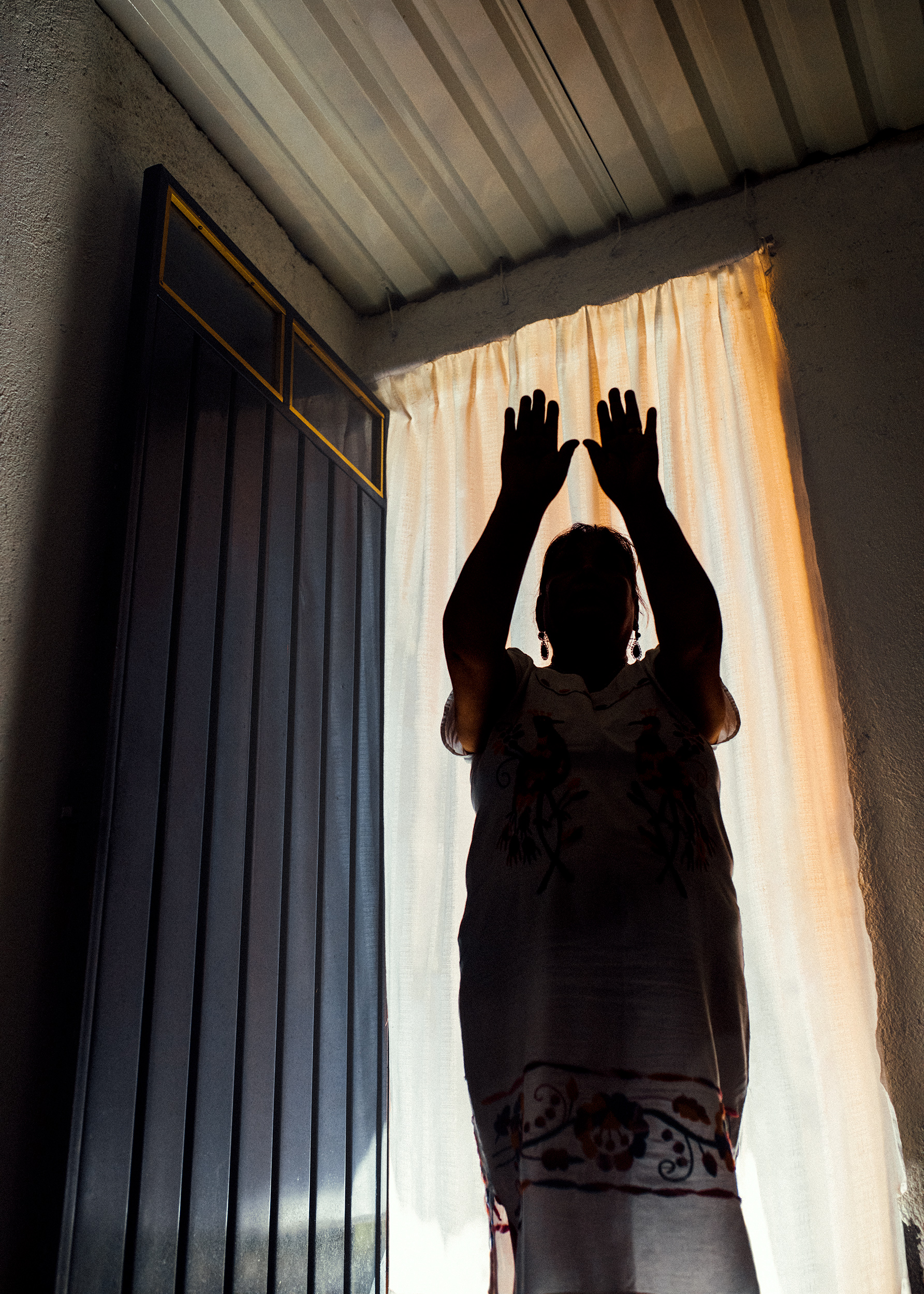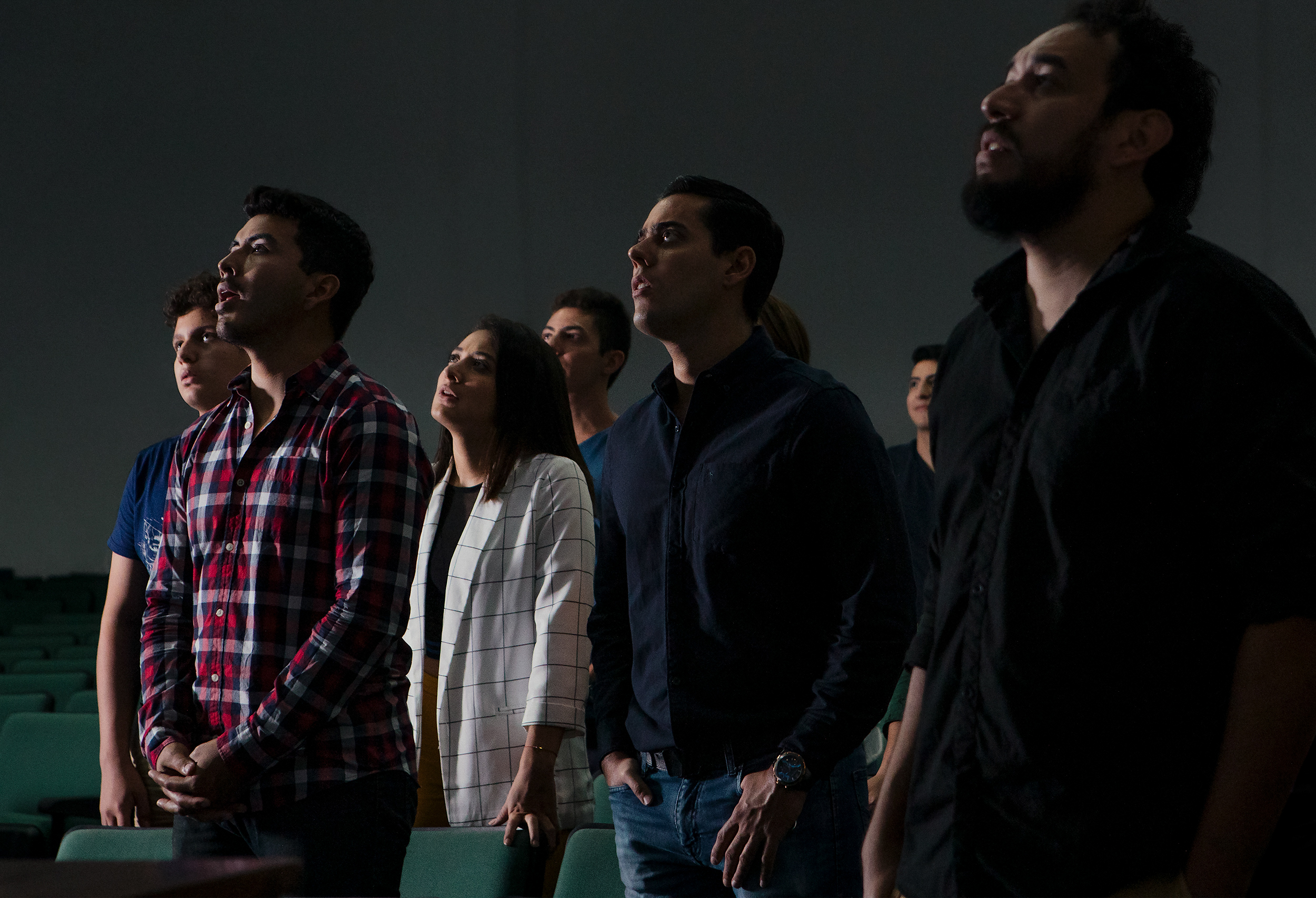Yo soy otro tú, tú eres otro yo (2019)
photography / publication
Mexico is a country where different mystical and religious traditions blend and mutate against a backdrop of a complex history: starting with the indigenous rituals of the Mayans and Aztecs, then Catholicism imposed by the Spanish colonists to the various cultural influences from Africa and from Latin and North America. While the majority of Mexicans identify as Catholics, the influences of indigenous customs prior to the colonization are still present today. ‘Yo soy otro tú, tú eres otro yo’ (I am another you, you are another me) is a portrayal of the Mexican people and their faith. Focusing on the diversity of contemporary spirituality in Mexico, this project explores the unseen and unveils the underlying similarities between these spiritual practices. It looks beyond the altars, icons and religious symbols, to capture the people behind these beliefs.
Part of ‘FOLLOW’19’, a project by Melkweg Expo, Fotolab Kiekie and EIZO Europe. Made possible by Amsterdam Fund for the Arts.
Exhibitions
2019 Melkweg Expo
2020 Helsinki Photo Festival
2023 Helsinki Photo Festival
Mexico is a country where different mystical and religious traditions blend and mutate against a backdrop of a complex history: starting with the indigenous rituals of the Mayans and Aztecs, then Catholicism imposed by the Spanish colonists to the various cultural influences from Africa and from Latin and North America. While the majority of Mexicans identify as Catholics, the influences of indigenous customs prior to the colonization are still present today. ‘Yo soy otro tú, tú eres otro yo’ (I am another you, you are another me) is a portrayal of the Mexican people and their faith. Focusing on the diversity of contemporary spirituality in Mexico, this project explores the unseen and unveils the underlying similarities between these spiritual practices. It looks beyond the altars, icons and religious symbols, to capture the people behind these beliefs.
Part of ‘FOLLOW’19’, a project by Melkweg Expo, Fotolab Kiekie and EIZO Europe. Made possible by Amsterdam Fund for the Arts.
Exhibitions
2019 Melkweg Expo
2020 Helsinki Photo Festival
2023 Helsinki Photo Festival
Exhibitions
2019 Melkweg Expo
2020 Helsinki Photo Festival
2023 Helsinki Photo Festival
